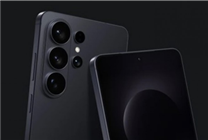The Changing Landscape of the Chinese TV Market: Q3 2025 Insights
Key Takeaways:
- Q3 2025 saw a significant decline in TV shipments in China, dropping to 7.27 million units.
- The top eight brands now command 96% of the market share, highlighting a trend of consolidation among leading manufacturers.
- Despite challenges, companies like Hisense and Xiaomi continue to thrive through innovation and strategic positioning.
In the recent China TV market report for the third quarter of 2025, a notable shift has been observed in the dynamics of TV shipments. The data reveals that branded TV shipments have plummeted to 7.27 million units, representing a decline of 10.4% compared to the same period last year and a month-on-month decrease of 6.6%. This downturn marks the first quarter-on-quarter decline in the Chinese TV market in five years, signaling a shift in consumer demand and market conditions.
The decrease in shipments can be attributed to several factors. Insufficient demand rigidity has played a primary role, coupled with the adverse effects of a previous state subsidy policy that appears to have overstayed its relevance. Additionally, the reduction in available state subsidy quotas in the third quarter of this year has contributed to the weakened market performance.
Amid these challenges, the dominance of a few leading brands has become increasingly evident. The top four brands—Hisense, TCL, Xiaomi, and Skyworth—together account for a commanding market share of 80.1%. Expanding this picture, the top eight brands—adding Changhong, Haier, Konka, and Huawei—now hold an impressive 96% of the market share, marking an all-time high and indicating a trend towards consolidation.
In challenging market conditions, resilience has been noted among the leading brands. Hisense, leveraging its technological advancements and robust supply chain management, has successfully carved out a stronghold in core areas such as Mini LED technology and ultra-large screen displays. This strategic focus has allowed Hisense to maintain its market leadership despite the broader industry slowdown.
Xiaomi, encompassing its REDMI product line, has also demonstrated significant resilience by adhering to a highly effective cost-effective positioning strategy. The company’s continual investment in smart ecological system synergies has bolstered its shipments, allowing it to outperform the general market decline during the first three quarters of the year.
In contrast, the performance of major foreign brands like Samsung, Sony, Philips, and Sharp has been lackluster. Collectively, these brands accounted for less than 5% of the market share in the third quarter, highlighting their prolonged struggles in the Chinese market.
Looking ahead, projections from market analysts suggest that TV shipments in China could decrease by another 6.8% year-on-year in 2025. However, the technological innovation and strategic advantages of leading brands are expected to play a significant role in shaping market trends moving forward. Leading players are expected to continue leveraging their strengths in technology to weather the fluctuations in demand effectively.
In summary, the third quarter of 2025 has illuminated both the challenges and opportunities within the Chinese TV market. While overall shipment numbers are declining, the strategies employed by market leaders showcase the importance of innovation and adaptability in navigating a shifting landscape.





